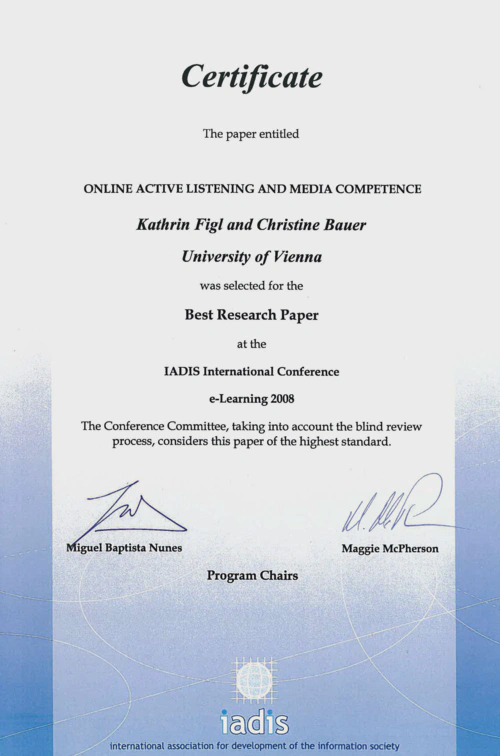 IADIS e-Learning 2008 Best Research Paper Award
IADIS e-Learning 2008 Best Research Paper AwardAbstract
The highly recognized concept of ‘‘active listening’’ is widely adopted in contexts that involve gathering information and solving problems. Demanding both verbal and nonverbal skills, this way of communication improves mutual understanding by using techniques like paraphrasing. The benefits are manifold and crucial in many areas of life for all kinds of communicative settings – face-to-face as well as online. For instance, it avoids misunderstandings, as people verify that they really understand. In conflicts, people tend to be more willing to explain in detail, which increases chances to find a joint solution. Our study investigates active listening in an online educational setting using written communication, which is a novel asset. We thereby focus on instant messaging and e-mail communication and examine both settings’ capacities and differences. More than only exploring whether active listening is effective in online communication, we examine students’ media competence for being able to adequately use the media under investigation for the given task. The study was conducted in a technology-enhanced course on ‘‘Soft Skills for Computer Scientists’’. Interestingly, analysis reveals that active listening techniques do have positive effects on communication in the analyzed online settings and students seem to be aware of the analyzed media’s strength and weaknesses. Furthermore, our results tend to support the media synchronization theory.